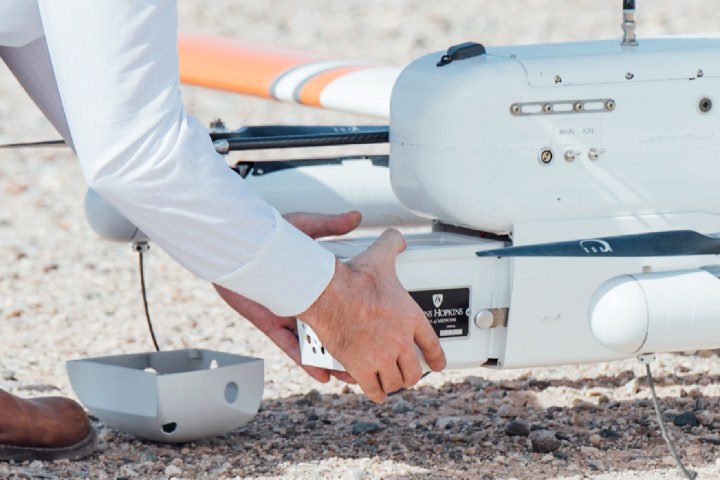
“Earlier reports of drone-transported medical samples were the equivalent of 40 km in a fixed-wing vehicle, and 27 minutes — equivalent of 13-20 km — in a multirotor,” Timothy Amukele, assistant professor of pathology at the Johns Hopkins University School of Medicine, told Digital Trends. “While these times and distances were sufficient as proofs of concept, they are not long enough to address the needs of real-world drone networks.”
It’s for this reason that the new demonstration is so exciting. Not only does it smash previous attempts at carrying out the task, but it further demonstrates that drones have a very real role to play in tomorrow’s medical sample delivery systems. Getting diagnostic results more quickly under difficult conditions has the opportunity to both improve care and save lives.

The drone transportation system was matched up against blood samples transported in a car, using active cooling to maintain target temperature. The average temperature of the flown samples was 76.6 degrees Fahrenheit, compared with 81.1 degrees Fahrenheit for the ones delivered by road-based vehicle. Following the transportation part of the experiment, the samples were analyzed at the Mayo Clinic in Scottsdale, Arizona. Both samples displayed similar results for red blood cell, white blood cell, and platelet counts and sodium levels — showcasing the safety of drone delivery.
“Drones have a very light footprint,” Amukele continued, describing their advantages as delivery systems. “They don’t require infrastructure to work. They can go where there is no road with minimal investment.”
At present, drones aren’t being used to do round-trip pickup and drop-off of real medical samples for real patients. However, this is something the Johns Hopkins team plans to change by early next year. “This study is part of the work to get there,” Amukele said. “Zipline is the only company that is doing significant work in this field, and they do one-way transport — [meaning] fly and drop-off only.”
A paper describing the Johns Hopkins was recently published in the American Journal of Clinical Pathology. Now, how about drone-based transplant organ delivery next?


